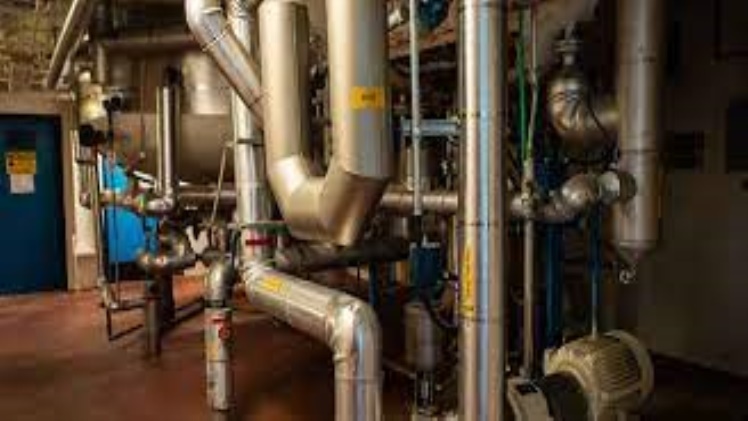No matter if you’re just starting out or have been employed in the boiler industry for years, this course will give you a solid grasp on how steam systems function as well as best practices in safety and efficiency.
This two-day hands on course will equip you with the knowledge and assurance to keep your Steam System running safely and efficiently, helping to prevent costly downtime due to malfunctioning equipment.
Basics of Steam Systems
Steam is an important energy source in industry, offering high efficiency, low toxicity, ease of transport and the capacity to transfer heat.
Water vaporizes at 212 degrees Fahrenheit, releasing 180 BTUs per pound – known as the ‘Latent Heat of Vapourization’. This heat transfer takes place due to its water-vaporization potential.
Heat is generated, but it must be delivered to the process at a certain temperature in order for it to make sense for the plant. Controlling steam flow becomes essential – see Module 2.
Once infiltrating the distribution pipes, water will give up some of its heat energy and condense back into water – this is known as condensate, and is commonly drained away using steam-powered pumps. You can also know about lò hơi và thiết bị lò hơi.
Steam Traps
Steam traps are used to remove condensate and non-condensable gases from steam systems, helping optimize heating applications when good heat transfer is desired.
Steam is frequently employed as a fuel in industrial facilities to generate power, process or transport substances. Additionally, steam has long been employed for heating in many commercial buildings and the marine industry.
A steam trap removes condensate, air and other non-condensable gases from steam pipes to prevent waterlogging of equipment. This can be an expensive issue that reduces heating efficiency while costing money to fix.
Steam traps come in a range of designs and can adjust according to changes to either condensate load or environmental conditions. Some traps only discharge condensate, while others also discharge air and other gases.
Pressure Reducing and Relief Valves
Pressure reducing and relief valves are essential parts of any steam system. They detect changes in pressure downstream in the piping, then adjust their opening to keep everything flowing smoothly.
When selecting a pressure reducing valve, the size, capacity and flow rate of your downstream equipment must be taken into consideration. For instance, if you are designing a station to reduce 150 psig steam to 10 psig, then you must select an inspection valve rated for 150 psig even though it has been set at 15.
Pressure reducing and relief valves come in two varieties: pilot operated or direct acting. The latter is more common, offering faster responses to load changes while being ideal for larger loads requiring close pressure control. Know more about Bảo toàn năng lượng và thiết bị trao đổi nhiệt in the course.
Steam Distribution Systems
Steam distribution systems transfer the heat generated in a boiler or steam generator to terminal or end-use equipment, as well as providing venting for air and non-condensable gases.
Steam has a greater thermal energy density in its vapor form than hot water, making it an ideal choice for heating or cooling applications. Plus, steam is quiet, easy to control, and inert.
Steam, despite its numerous advantages, is extremely hot and must be adequately insulated to prevent burns or injuries from occurring. Insulation plays a particularly important role in supply and return piping as well as drip legs, valves, strainers, and condensate receiver tanks.
Measurement and monitoring systems are essential for industrial steam distribution systems to maximize energy and water savings. This promotes efficient custody transfer, minimizes the risk of water hammer, and optimizes steam dryer and pressure reducing valve performance.

